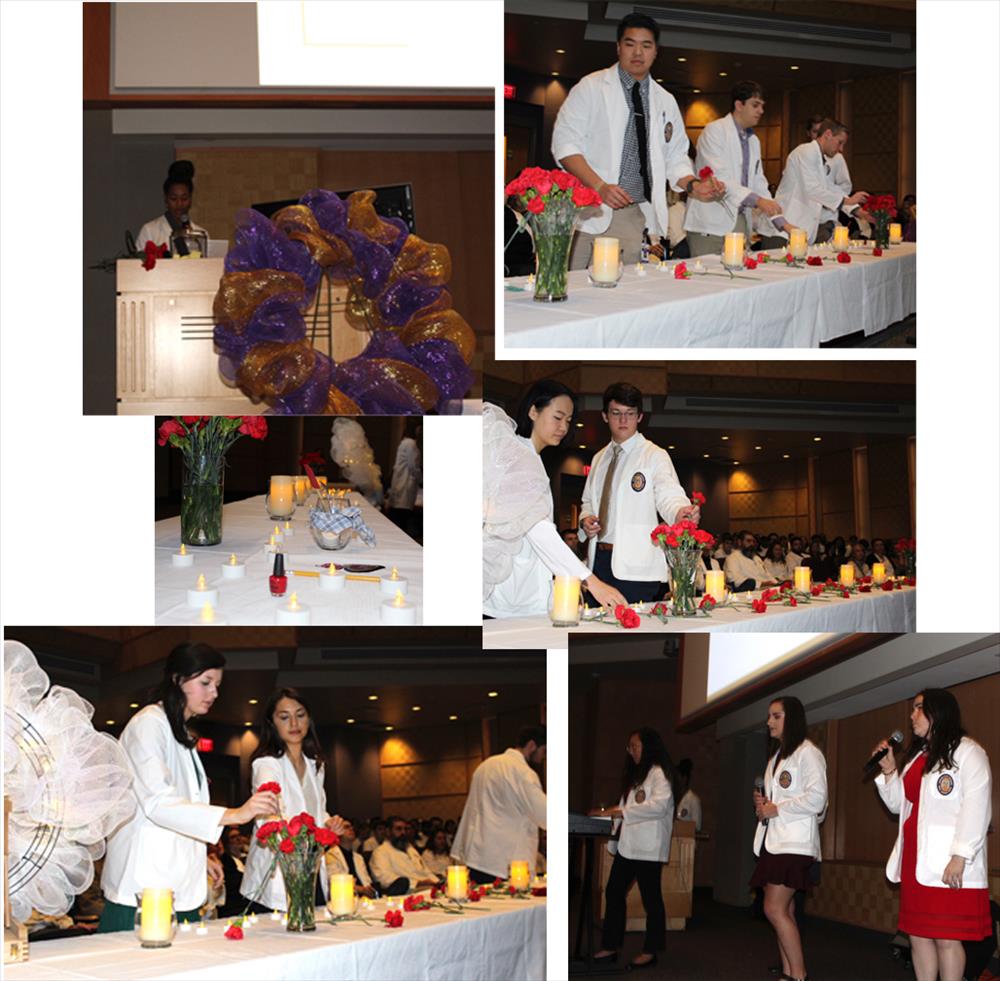Cadaver Ceremony Acknowledges Generosity of Donors
Philanthropy serves to invest for and in good. Many donors give charitable gifts over their lifetime, and many more leave substantial gifts in their wills to nonprofit organizations. Others make the tremendously personal donation to donate their body after death for medical education.
There is no question that these donations are indispensable to medical teaching. After all, anatomy is the foundation of all medical knowledge.
“There is so much data out there about the importance of cadavers to medical education,” said Co-Course Director of Gross and Developmental Anatomy Dr. Jason Mussell. “Through the generosity of these donors, medical students learn so much more than anatomy. They learn humanity in a way that I cannot teach. These donors become the first years' greatest teachers.”
Each year, the 1st year class president organizes a special ceremony to honor and pay tribute to the individuals who donated their bodies to their medical education.
“The ceremony is not about the students - it is about the donors,” said Dr. Mussell. “The ceremony helps to remind students that although they will have to compartmentalize during their careers, they must never dehumanize.”
“The ceremony offers a time to reflect not on what the students have done during the course, but what others do for us,” he added.
“Every patient's story is told through their body. You might see a pacemaker or scars that tell a story. Other times a tattoo or fingernails provide insight. Hands may be delicate or hardened,” said Shakira Harding, SOM class president 2023. “Sometimes we want to forget for our sake that you were a person, but these qualities make us think about their lives and what their lives were like.”
“These individuals are our first patients. They are the first cut we will ever make and our first diagnoses,” she added.
The solemn ceremony, held in November, included personal reflections, the reciting of a poem, spoken word, the singing of Amazing Grace, and candle lighting. A slideshow with the age, occupation, and date of death of each donor played in the background. Fifty-one roses were placed on a table to represent all 51 donated bodies. Students also wrote letters to the donors which were collected on a poster that Dr. Mussell keeps in his office.
Dr. Mussell shared a passage from Dr. Paul Kalanithi's book, “When Breath Becomes Air.” The passage included the author's suggestion that the students “not forget that we are always standing on the shoulders of giants. Our Giants come in the form of our donors and eventually your patients. Never forget that you would not have a career without them. Do not let this turn you into the callous arrogant doctor. Do not let this experience diminish the flame of your humanity for that of knowledge. Instead recognize that it is the flame of your knowledge that constantly needs to be tended and that it can only be done by reigniting it with your humanity.”
Dr. Mussell urged his students to remember that the ceremony was not about their growth or accomplishments during the course, but about the “sacrifice of your first patient and every patient after that.” He finished by adding that the students should continue to learn from the generosity of these strangers about what it truly means to give all to some.
“The ceremony was incredibly meaningful and very emotional,” Harding said. Although fetal donors are never dissected, they are included for observational learning purposes. One of the students who is also a mother made wreaths to honor these youngest donors.
Harding said that the students work in teams of four on the bodies throughout the course. They become extremely close to their fellow students, or tank mates, throughout the course of the year while learning far more than anatomy, but also how to work as a team and about humanity.

